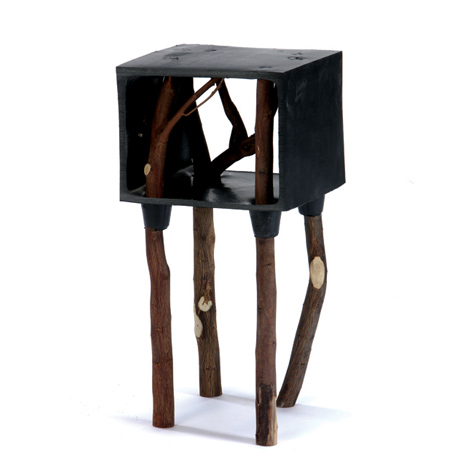Israeli designer Adi Zaffran Weisler has created a set of tables and stools by combining tree branches, trunks and twigs with plastic during the moulding process.
The RAWtation collection is formed by inserting the tree material into plastic formers before beginning the rotational moulding process.
During the process, plastic is placed in a mould, heated, rotated and then allowed to cool, with the plastic curing around the organic material to form a strong fixing.
All photographs are by Oded Antman.
Here's some more from the designer:
Rawtation
The aim of my project is to discover the fusion between the organic and the industrial.
As I was learning the industrial process of plastic rotational molding I discovered the potential for combining raw organic elements in the process.
I tried creating a method where the meeting point between the organic and the synthetic is made by the rotational molding process without the need for cold joints or complex adjustments.
The manufacturing process uses pruned branches, trunks and foliage combined with plastic which creates the joints.
I designed a number of molds in basic geometric shapes in which it is possible to insert trimmed foliage of various kinds.
Each time I used a different branch, bark or plant, which each influence the shape of the final object and create a unique and personal object.
The polyethylene and the raw organic elements are inserted to the metal mold, which is then heated and cooled while rotating.
The plastic forms along the inner side of the mold and firmly fastens together the organic elements, especially while cooling and shrinking.
From the manufacturing process a new aesthetic language is created out of basic shapes and raw material.
The result is a set of tables and stools.
See also:
.
| Rings by Adi Zaffran Weisler |
Unhidden by Leon Li and Ryan Ran |
More furniture stories |

